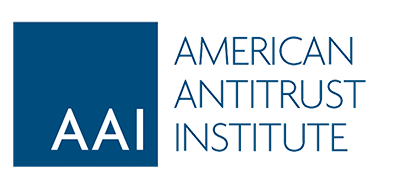AAI has joined with Professor Eric A. Posner, the Kirkland & Ellis Distinguished Service Professor of Law and Arthur and Esther Kane Research Chair at the University of Chicago Law School, in filing an amicus brief urging the D.C. Circuit Court of Appeals to credit economically distinct theories of liability for aftermarket monopolization under Section 2 of the Sherman Act.
In PhantomALERT, Inc. v. Apple, Inc., the plaintiff is an app developer who, during the pandemic, developed an app allowing smartphone users to report Covid-19 symptoms and hot spots by location. After Apple launched a similar app and excluded PhantomALERT’s app from the App Store, PhantomALERT brought a Section 2 case asserting that Apple tied the iPhone to the App Store and to Apple’s Covid-19-related tracing app and monopolized the aftermarket for Covid-19-related tracing apps. Apple then moved to dismiss the complaint.
The district court granted Apple’s motion, agreeing with Apple that PhantomALERT’s claim failed because it did not adequately define a “Kodak-style aftermarket.” Among other things, the district court found that the plaintiff failed to adequately allege lock-in, which it held “is the crux of any Kodak-style theory.”
In Kodak, the Supreme Court held that a defendant who lacks monopoly power in a foremarket nonetheless may monopolize an aftermarket under a lock-in theory, provided that a set of enumerated conditions are met. As explained in Epic v. Apple in the Ninth Circuit, the factors required for a Kodak-style lock-in theory are: (1) consumers in the foremarket must not generally be aware of the aftermarket restrictions; (2) consumers cannot price the aftermarket restrictions accurately because of significant information costs; (3) the cost of switching to a different brand in the foremarket is high; and (4) the aftermarket is itself a well-defined market. Here, however, the plaintiff alleged that Apple had market power in the foremarket.
AAI and Professor Posner explain that Kodak applies to claims of aftermarket monopolization only where the defendant lacks market power in the foremarket, not where, as in this case, the defendant possesses market power in the foremarket. A plaintiff can make out a prima facie case by showing that the defendant has market power over the foremarket and uses that market power to exclude competitors from the aftermarket. That theory of aftermarket monopolization follows from a straightforward application of traditional antitrust principles and not from the holding in Kodak. Among other things, the brief explains that a defendant with market power in the foremarket can exercise that power in the aftermarket regardless of whether its customers are aware of the defendant’s aftermarket behavior or can engage in lifecycle pricing. Proof of lock-in is not required in this scenario because the defendant’s power comes directly from its market power in the foremarket and not from its customers’ ignorance or confusion.
AAI thanks Garwin Gerstein & Fisher LLP (GGF), and GGF Partner and AAI Advisory Board member Deborah Elman, for serving as counsel to amici curiae. The brief was written by Professor Posner, with assistance from Ms. Elman and from AAI staff.


